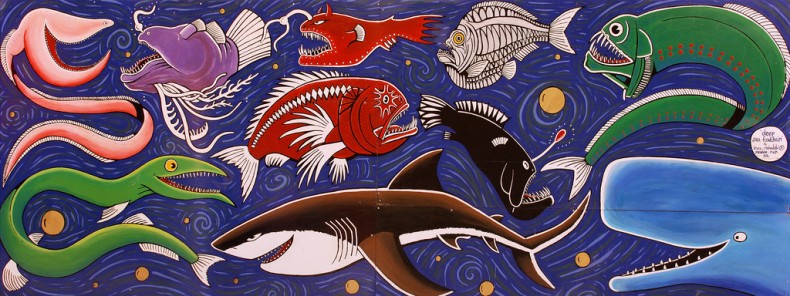 For a landlubber, I’ve been spending a lot of time around fish. Not long ago, I plunged my hands into paddlefish guts for a story about caviar poaching in the Ozarks; last year, I spent several weeks in very fishy places on and around the Mekong River, researching an ongoing project about hydropower development on the Mekong. And last month, I wrote a story about a Berkeley biologist whose work shows how declining fisheries are leading to all manner of social horrors—from terrorism to slavery—in many of the poorest places of the world.
For a landlubber, I’ve been spending a lot of time around fish. Not long ago, I plunged my hands into paddlefish guts for a story about caviar poaching in the Ozarks; last year, I spent several weeks in very fishy places on and around the Mekong River, researching an ongoing project about hydropower development on the Mekong. And last month, I wrote a story about a Berkeley biologist whose work shows how declining fisheries are leading to all manner of social horrors—from terrorism to slavery—in many of the poorest places of the world.
These stories have made me think about the limits of the famous (but apocryphal) advice Deep Throat gave to Bob Woodward and Carl Bernstein as they pursued the Watergate scandal: Follow the money. Of course journalists should always ask who’s paying, and who’s benefiting—those are key questions in any story. But money isn’t the only currency that matters. In many parts of the world, it’s important not only to follow the money but also to follow the fish.
More than one billion people worldwide rely on fish as their primary source of animal protein—and those one billion live disproportionately in developing countries. The Mekong River’s fisheries alone support some 50 million people, and many of them fish solely for subsistence, outside the cash economy. When money is involved, the economic signals are notoriously distorted: as a shared resource, the world’s fisheries are chronically vulnerable to overexploitation, and fish prices often don’t reflect the increasing effort required to haul them in. The result is that while market prices remain relatively stable, a lot of people are spending more and more time and earning less and less money catching far too few fish—a desperate situation that in many places has led not only to malnutrition but also to a rise in child labor, slavery, and violence. Declining wild fish populations and increasing demand have also sparked a global boom in aquaculture, which has increased fish supplies but carries its own environmental and social problems.
When it comes to fish, there are plenty of questions not fully answered by the market: who needs fish, and who’s getting them? Who’s catching what’s left—and at what terrible, uncountable price? The answers, all too often, are matters of life and death.
Top image: “Deep Sea Food Chain,” a mural by New Zealand artist Bruce Mahalski, on display in Wellington, NZ.
Good academics working on this general area — who you may already be on to — include Dara O’Rourke and David Biggs. Just in case…
Thanks, Erica. I’ve read David Biggs’ book Quagmire but am not familiar with the rest of his work – and didn’t know about Dara O’Rourke. Interesting.
Erica’s own research — if I understand it and I probably don’t — is at the intersection of environment, economics, and policy. I.e., she’s a good recommender.
Thanks, Ann. With the addition of ‘history,’ you’ve got it.
That’s a busy intersection! I’ll check out what you do, Erica.